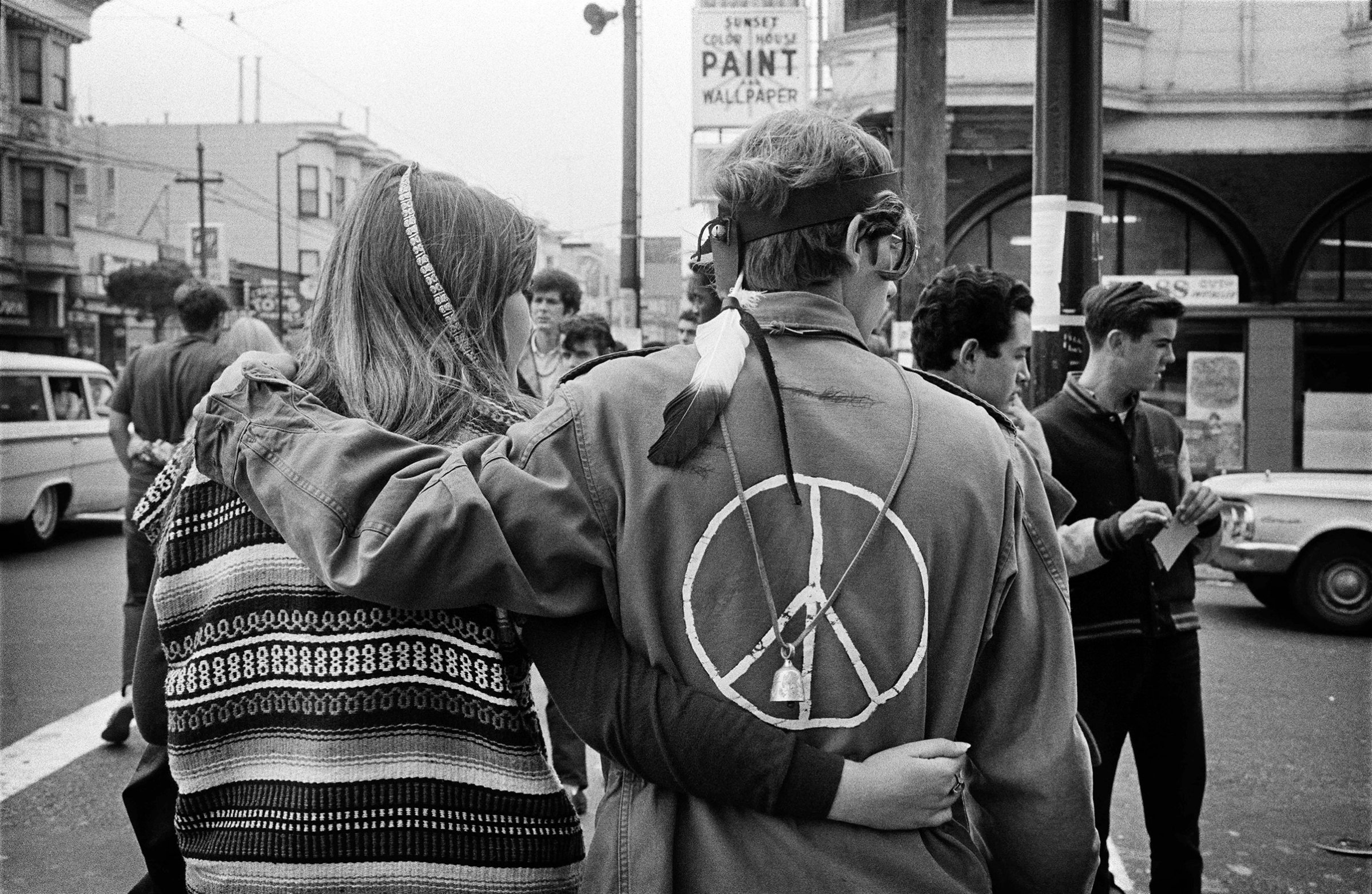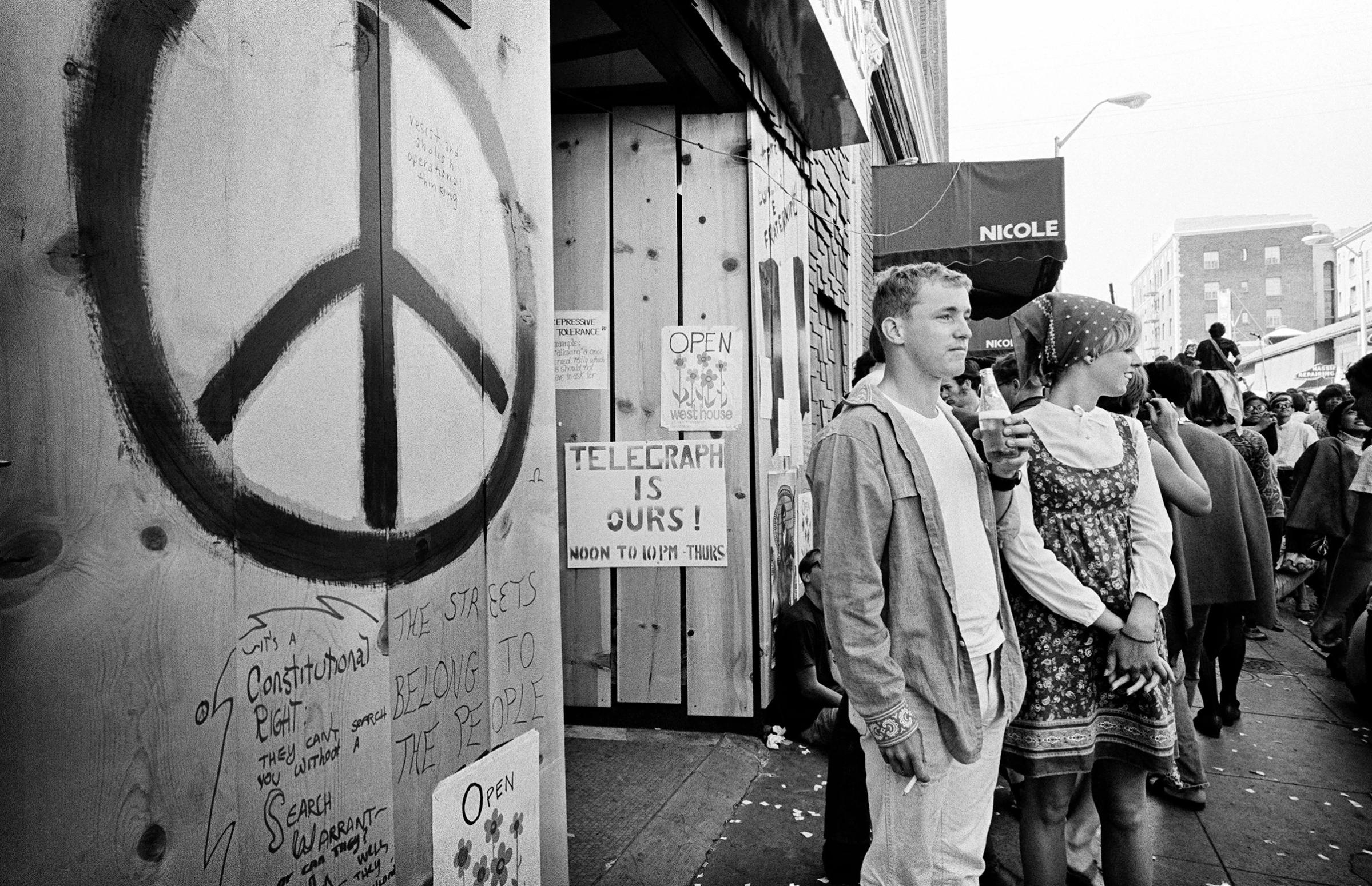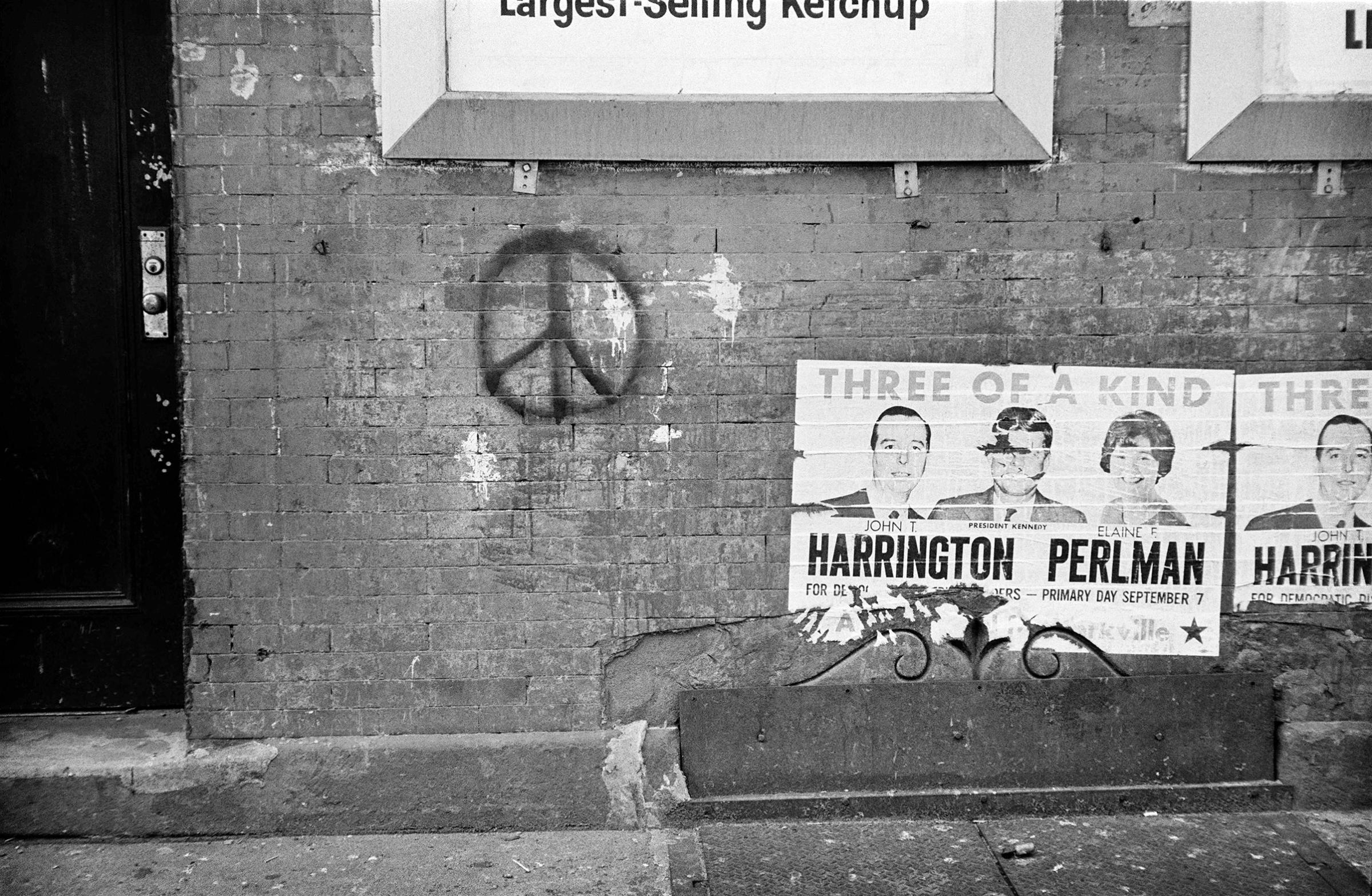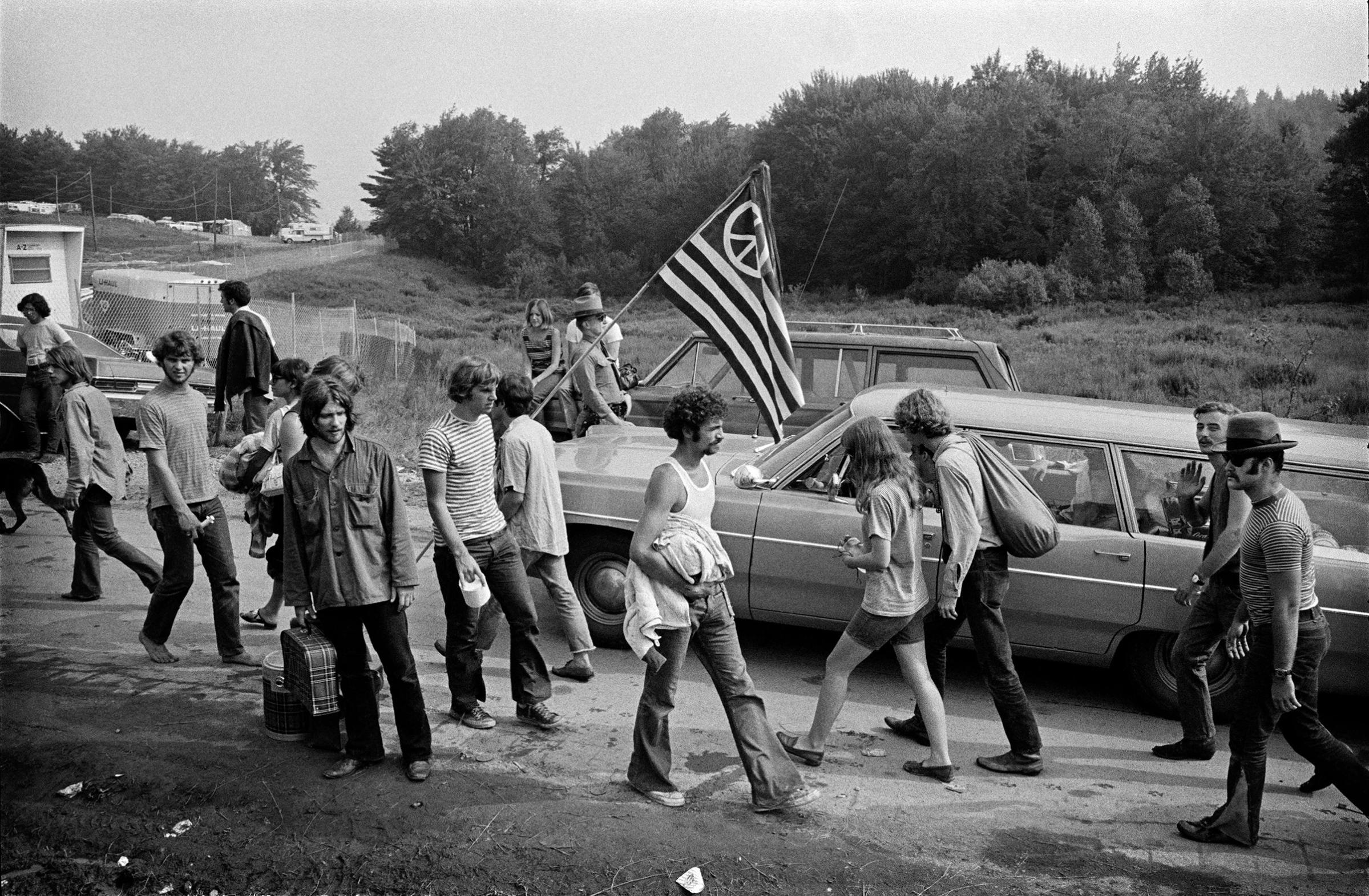
When the now-iconic peace symbol was first designed by Gerald Holtom in 1958, it had a very specific meaning. Holtom was active in a British nuclear disarmament advocacy group, and he referenced the shapes of “N” and “D” in the semaphore alphabet in order to come up with a symbol the group could use on signs at an upcoming protest.
But, like other effective symbols, it quickly spread to represent causes far beyond its creator’s intent. From protest against the Vietnam War to broader hippie ideals, that potent combination of a circle and a few lines has become part of the global vernacular.
Its impact is the subject of the new photo book Peace: Photographs by Jim Marshall, the release of which will be accompanied by exhibitions in New York City, London and Los Angeles. The book brings together 1960s images of that symbol captured by Marshall, who was best known for his music photography. Many of his peace photographs were previously unseen, and this represents the first time they’ve been brought together for the public.
As Joan Baez and others note in the book, Marshall’s fascination with the symbol was somewhat surprising, as he was, as Baez puts it, “somewhat of a hawk.” That odd juxtaposition of personality and subject is evidence that, at least in San Francisco and New York City, where most of the images in the book were taken, the peace sign was inescapable — and truly a sign of its time.
Correction: The captions on the first, third and ninth images in the original version of this gallery misstated where the photographs were taken. They were taken, respectively, on Telegraph Avenue, in Golden Gate Park and outside the U.S. Atomic Energy Building, not on Haight Street.










More Must-Reads From TIME
- The 100 Most Influential People of 2024
- The Revolution of Yulia Navalnaya
- 6 Compliments That Land Every Time
- What's the Deal With the Bitcoin Halving?
- If You're Dating Right Now , You're Brave: Column
- The AI That Could Heal a Divided Internet
- Fallout Is a Brilliant Model for the Future of Video Game Adaptations
- Want Weekly Recs on What to Watch, Read, and More? Sign Up for Worth Your Time
Write to Lily Rothman at lily.rothman@time.com